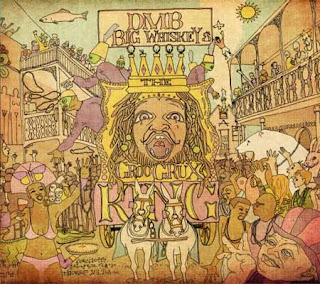iTunes LP – Is that all there is?

Apple rolled out an update to the Apple TV software software. This features a major change in the top menu (which now lists your own content first in each media list, rather than last) and it also now supports Internet Radio. Apart from that, there’s no real new functionality. Unless you also count support for Apple’s LP format. I’d been curious about the iTunes LP format – kind of an interactive format for albums – since Apple had announced it, but had never gotten around to trying one out. With the Apple TV update, I thought it would be great to update my Apple TV and try out iTunes LP at the same time. I was wrong. Last night I updated the Apple TV software, and also downloaded the Dave Matthews Band album Big Whiskey and The Groo Grux King in iTunes LP format. Only problem was that after downloading it and going to the Apple TV, all I could find were the movies and the songs; no sign of the iTunes LP interface. In the end I wondered if I’d misunderstood, and that it just meant you...


